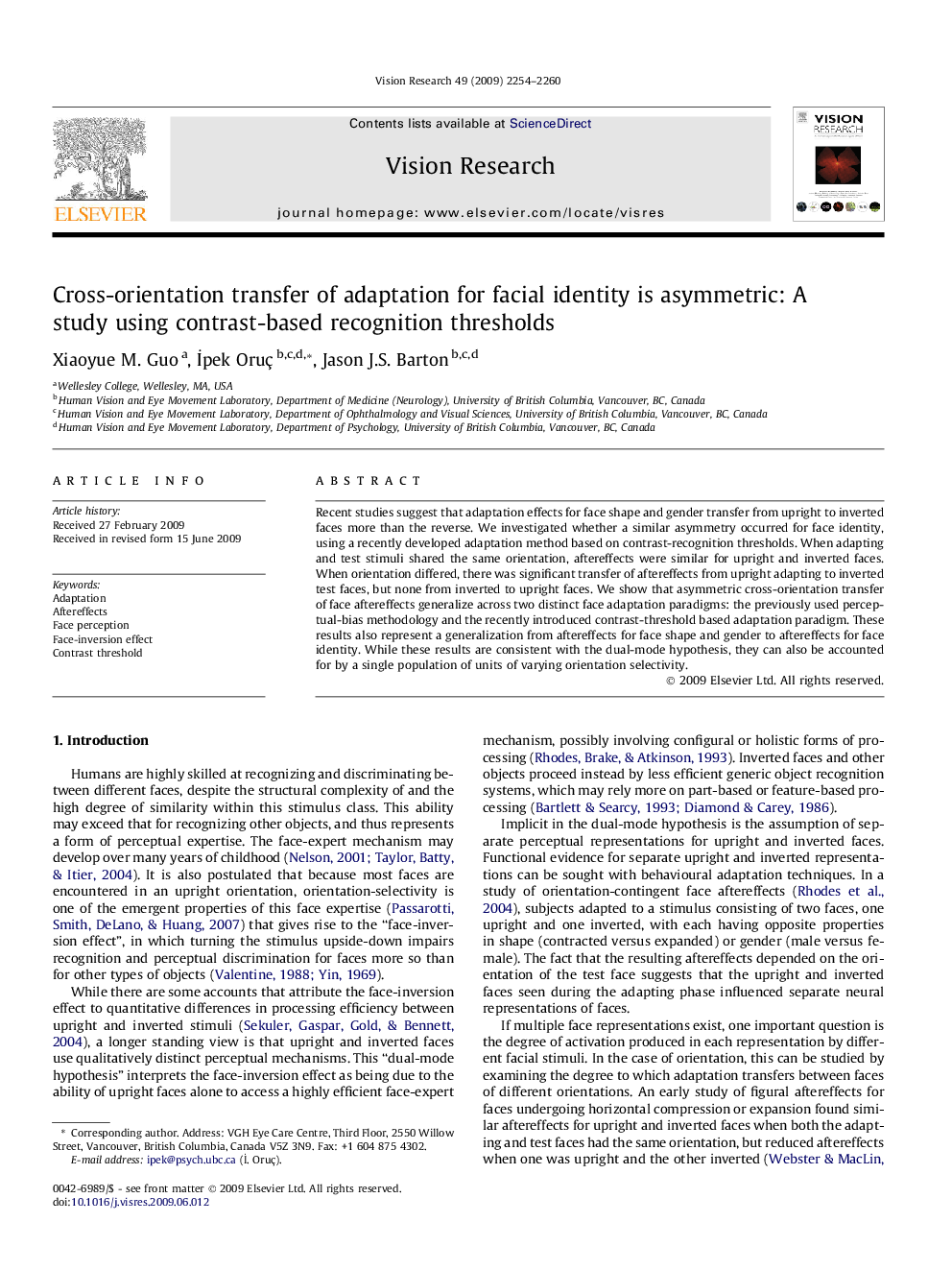| Article ID | Journal | Published Year | Pages | File Type |
|---|---|---|---|---|
| 6203935 | Vision Research | 2009 | 7 Pages |
Recent studies suggest that adaptation effects for face shape and gender transfer from upright to inverted faces more than the reverse. We investigated whether a similar asymmetry occurred for face identity, using a recently developed adaptation method based on contrast-recognition thresholds. When adapting and test stimuli shared the same orientation, aftereffects were similar for upright and inverted faces. When orientation differed, there was significant transfer of aftereffects from upright adapting to inverted test faces, but none from inverted to upright faces. We show that asymmetric cross-orientation transfer of face aftereffects generalize across two distinct face adaptation paradigms: the previously used perceptual-bias methodology and the recently introduced contrast-threshold based adaptation paradigm. These results also represent a generalization from aftereffects for face shape and gender to aftereffects for face identity. While these results are consistent with the dual-mode hypothesis, they can also be accounted for by a single population of units of varying orientation selectivity.
